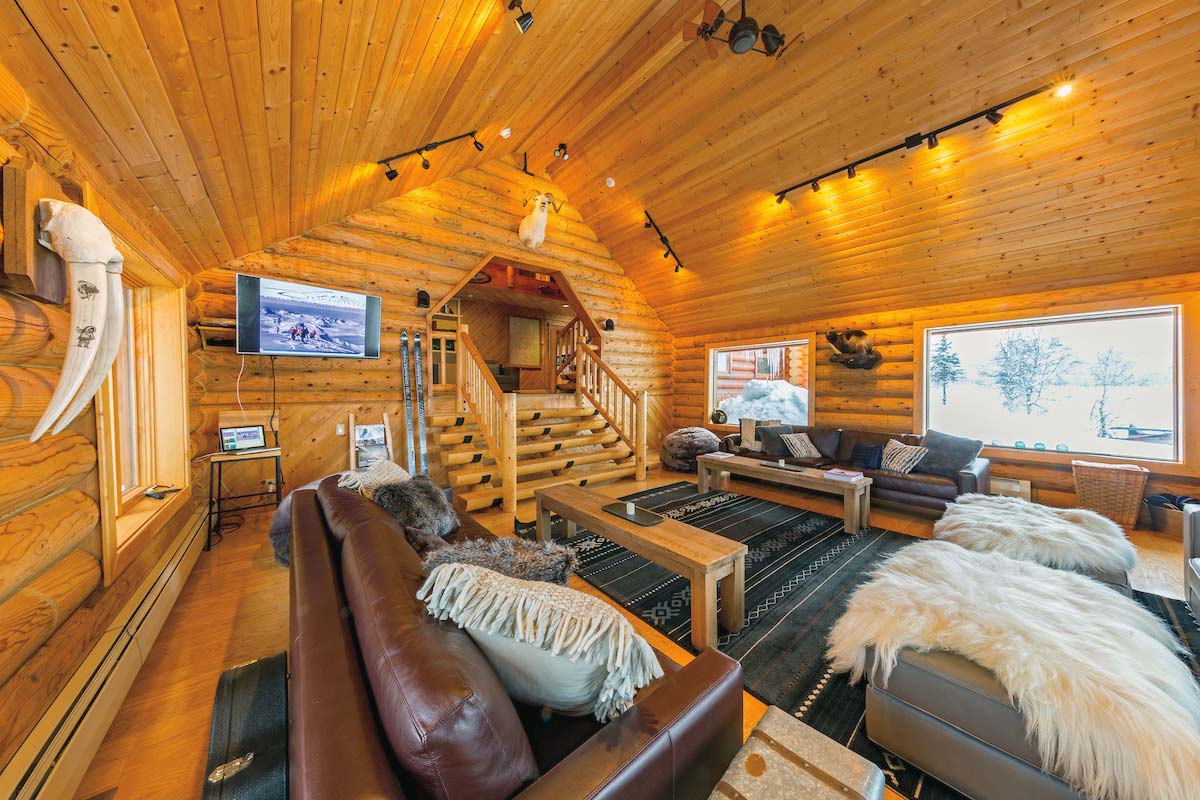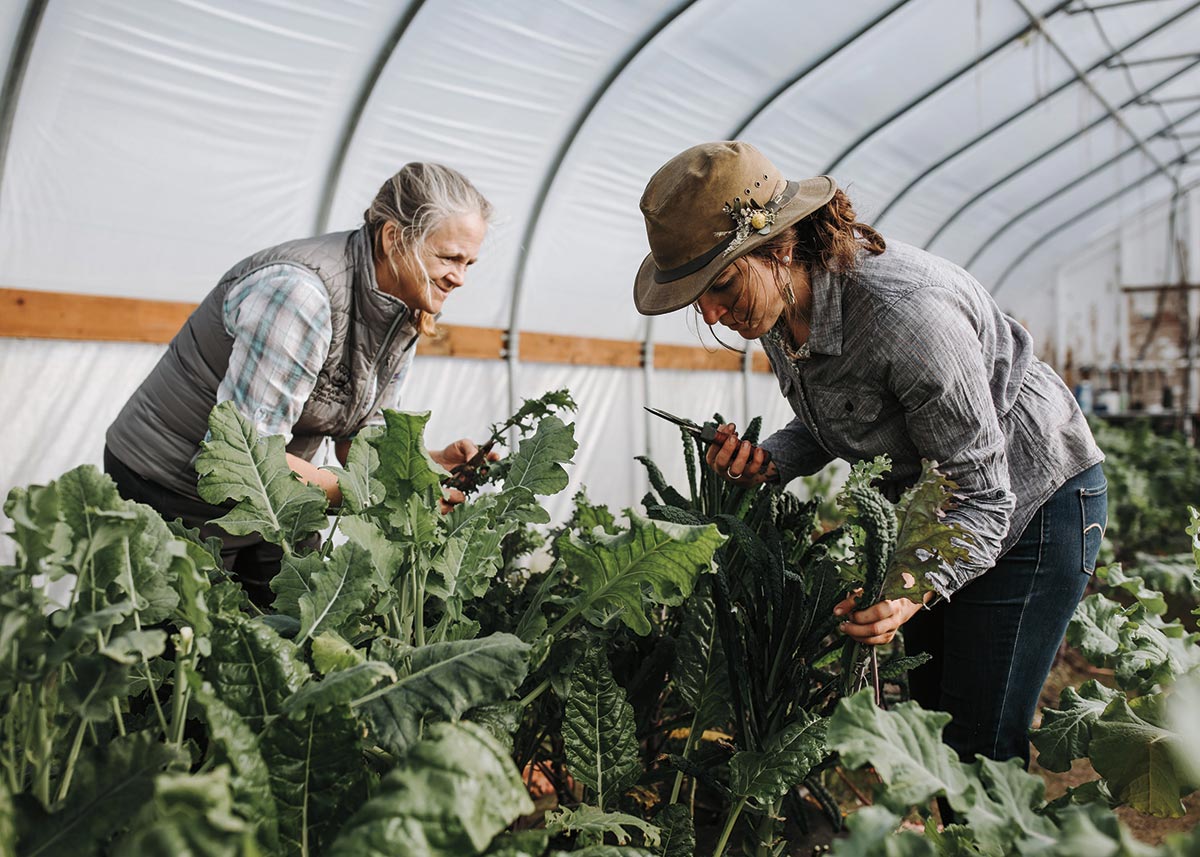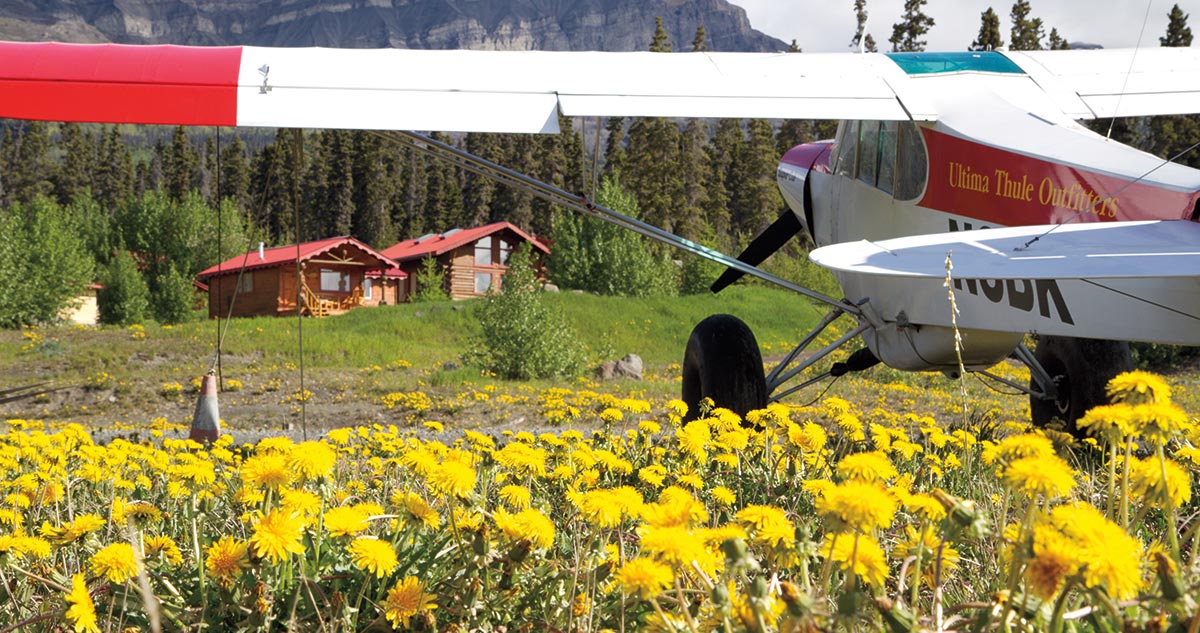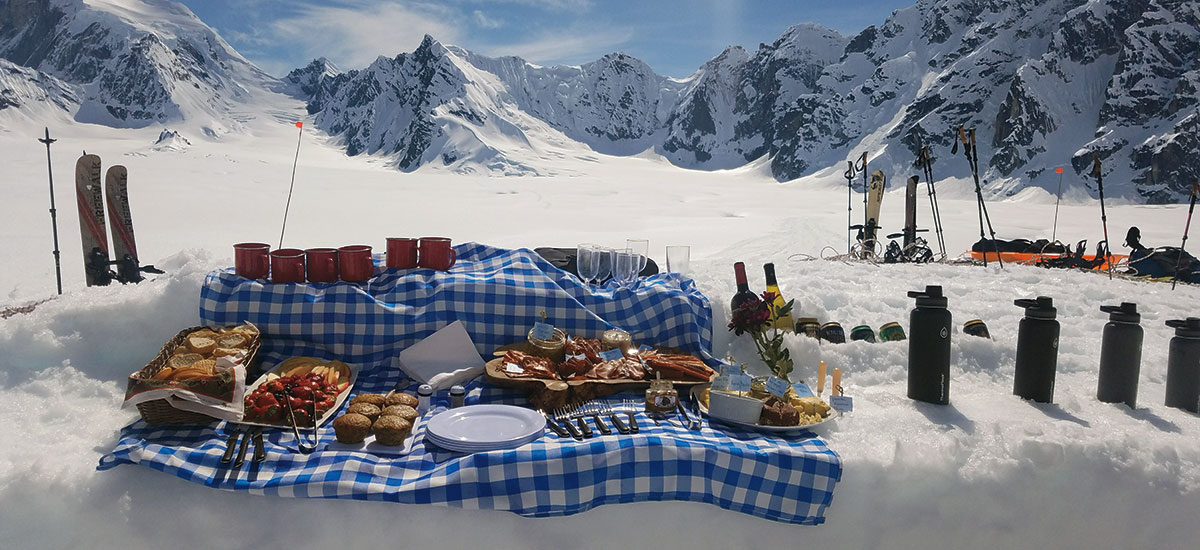Tordrillo
hen you think of luxury resorts, what first comes to mind? A private pool? An upscale spa? Monogrammed bathrobes and butler service?
In Alaska, luxury takes on a different meaning.
“There’s not a true definition for what a luxury resort in Alaska is,” says Sarah Leonard, president and CEO, Alaska Travel Industry Association. “It’s more about the experience and being one of the few people able to take part in something amazing. It’s not so much about the structure or property, though there are high-end lodges; it’s about the unique experience.”
Tordrillo
hen you think of luxury resorts, what first comes to mind? A private pool? An upscale spa? Monogrammed bathrobes and butler service?
In Alaska, luxury takes on a different meaning.
“There’s not a true definition for what a luxury resort in Alaska is,” says Sarah Leonard, president and CEO, Alaska Travel Industry Association. “It’s more about the experience and being one of the few people able to take part in something amazing. It’s not so much about the structure or property, though there are high-end lodges; it’s about the unique experience.”
Tordrillo

Tordrillo
Tordrillo

Tordrillo
Tordrillo Mountain Lodge attracts guests from all over the world for its fishing, kayaking, waterskiing, whitewater and river rafting, hiking, heli-trekking, skiing, mountain biking, and more, including a new via ferrata climbing route.
“Our clientele is broad; we’re always trying to create the vacation that we think they imagine Alaska to be,” says Mike Overcast, who co-owns the multi-sport lodge with Olympic gold medalist Tommy Moe. “We want them to have a number of activities to choose from and include two helicopter excursions in our day rate so they can pick and choose what they want to do, depending on the weather.”
Tordrillo is a forty minute flight from Anchorage and is located on the banks of the Talachulitna River and Judd Lake.
“We’ve worked really hard to create an environment that is really different than a typical Bush Alaska property,” says Overcast of the beautifully landscaped grounds, which include raised garden beds that provide fresh produce for the guests.
“The farm-to-table approach is very important to our customers; they don’t want Thai food while they’re here—they want food anchored in Alaska. In addition to the vegetables we grow and Alaska seafood, we augment our meals with elk and other wild game, which is a natural fit.”
Co-owner
Tordrillo Mountain Lodge
For the last twenty years, Tordrillo has offered a Kings and Corns package that combines king salmon fishing and corn snow helicopter skiing. Its newest activity, set to open this month, is via ferrata climbing, a 1,200-foot fixed route that goes up a sheer rock mountain face.
“The route will be fixed with cables and rings where there are not natural handholds, and climbers will be harnessed in to prevent falling. The three-hour climb starts 2,000 feet off the deck, and climbers have to cross an arête to get to the top of the mountain where the helicopter will pick them up,” explains Overcast.
The lodge, which can accommodate twenty-four guests, has been completely remodeled over the last couple of years, and Finnish chalets have been added to the property. The lodge features a dining room with massive windows overlooking the lake, as well as hot tubs and saunas.
“Our guests get a hardcore mountaineering experience and then can unwind in the hot tub or sauna or get a massage before dinner,” says Overcast, adding that they can also enjoy a libation from the resort’s 500-bottle wine cellar.
About 50 percent of the lodge’s clients are from the East Coast, with many of the rest coming from international financial centers such as Geneva, Zurich, London, Paris, and São Paulo, Brazil. Winter is still the resort’s biggest season, with guests paying $15,000 for a week of winter activities. The summer rate is $2,000 per person per day.
“We wanted to create a place that we’d be interested in visiting, so we talked to our guests to find out about their interests, and then we worked to meet or exceed their expectations,” says Overcast. “More and more lodges in Alaska are beginning to focus on the high-end customer, and we believe the more the merrier. We want people to understand that Alaska is not totally rough; we’re trying to create something luxurious that utilizes the attributes of our surroundings.”
Ellie Claus, operations manager at Ultima Thule, agrees with Leonard of ATIA that what makes a resort luxurious is different for everyone. “What defines luxury is different in Alaska than what is considered the standard in the tourism industry,” she says. “We are lumped into a category that we don’t really fit into, but there’s not a better definition for what we do. It’s like the Inuit have fifty words for snow; I wish there were the same number of expressions to define luxury.
©Grace Adams

©Grace Adams
©Grace Adams

©Grace Adams
“If you’re looking for a spa, butler service, or an infinity pool, you’re not going to find it here,” she adds. “But we offer things that other places can’t.”
Ultima Thule is located 50 air miles from the nearest gravel road in Alaska’s Wrangell-St. Elias National Park, part of the largest protected landmass on earth. Guests are picked up by plane at the McCarthy airstrip and flown to the lodge, which hosts twelve people at a time.
“While other resorts may have pools and room service, you’re sharing those amenities with 500 other people,” says Claus. “Here, you’re spending time with only eleven other people; it’s a relationship-style experience.”
Great attention to detail is paid to creature comforts in the private cabins, all of which are positioned to have private views. Cabins include running water, full bathrooms, and hot tubs and saunas, and the furniture within them is made from local lumber sources and designed to complement the natural beauty of the surrounding wilderness. One unique amenity is a reusable water bottle in each guest’s welcome kit that encourages sustainability and can be filled with glacier water.
“When you live 50 air miles from the nearest road, having electricity twenty-four hours a day is a pretty big amenity,” says Claus, adding that they spend time educating guests on what it’s like to live off the grid. “Even with our high standards of ‘luxury,’ I will be the first to tell you that our property is not designed to attract everyone. Often sustainability trumps mainstream luxury, and we try to communicate that in advance so people know what to expect.”
©Arturo Polo Ena

©Arturo Polo Ena
Ultima Thule is all-inclusive, so meals, activities, flights, and equipment are included in the package cost, which is $8,775 per person for a four-night package. The entire facility can also be rented for $25,000 per night with a minimum three-night stay, which can include sixteen people.
While all of the resort’s activities are included, they are not planned ahead of time. “We have no itinerary; we let Mother Nature lead us,” says Claus.
Depending on the weather, guests may go fishing, bear viewing, hiking or rafting, or take a flight safari to view the Wrangell Mountains and Chitina River. “Every activity revolves around flying, so we look at the weather in the morning to see what’s possible,” says Claus. “At breakfast, we present different ideas, and guests have the option to have their own guide or to join a group activity.
“What we offer is based on our interactions with guests,” she adds. “Some people want to hike every mountaintop; others want leisure. No one is lumped into an experience with others who are not on the same agenda. Activities are tailored to each group or individual.”
©Arturo Polo Ena

©Arturo Polo Ena
Most of the food is locally harvested and includes salmon, halibut, and foraged, made-in-house jams and jellies. “We grow a lot of vegetables on our property and, by July, are producing most of the greens and root vegetables onsite,” says Claus. “Our focus is not on extravagant food but on foods that are representative of Alaska. Servings are hearty and family-style, and we let the natural flavors speak for themselves.”
Speaking of family, the third generation of the Claus family runs the resort, which was started as a hunting camp back in the 1950s before Alaska became a state and Wrangell-St. Elias became a national park.
“My grandfather, who homesteaded the property, got grandfathered in,” says Claus of the pilot and big game guide. “My parents decided to turn it into a small-scale recreational operation, offering something that wouldn’t have a huge impact on the area and would provide a unique experience in the natural world.
“People ask why it’s so expensive and I explain to them that operating expenses for places off the grid in Alaska are astronomical,” she continues. “It’s hard to comprehend that every roll of toilet paper is handled ten times before it gets here, and then there’s the expense of vehicles and airplanes. A 500-room hotel is definitely more cost-effective, but the luxury of getting out here for this experience is where the value lies.”
Marne Sheldon, owner and manager of The Sheldon Chalet and the Historic Mountain House in Denali Park, agrees that sometimes the experience is worth far more than the cost.
“What defines luxury is a tough question, but we don’t believe it is defined by price point,” she says. “The finer things in life cover a wide spectrum.”
©Jeff Schultz

©Jeff Schultz
Sheldon says that the chalet is included in the luxury sphere because it is an extraordinarily exclusive experience. “No one can replicate this experience because no one else owns this type of property in Denali,” she explains, adding that the park expanded in 1982 to include the Sheldon homestead. “We are located on the flanks of the most majestic peaks in North America and the world.”
In the 1960s, Sheldon’s father-in-law, Don Sheldon, surveyed and mapped the Alaska Range. He decided to homestead a “piece of rock” he found, and in 1966 built the Historic Mountain House, which is still rented out today to adventurers from all over the world.
©Jeff Schultz

©Jeff Schultz
“After my mother-in-law passed, we were going through some papers and uncovered historical information, photos, audio recordings, and blueprints for another structure,” says Sheldon. “We decided to create the chalet in their honor.”
The Sheldon Chalet opened in February 2018 and has since appeared in top-line travel publications including The Robb Report, Travel & Leisure, and Town & Country. It was named Time magazine’s best new place in 2018.
“We could have built it to be more rustic, but we already had that with the Historic Mountain House,” says Sheldon of the modern design. “We wanted something as majestic and grand as the surrounding area.
“It provides a peace and a solitude that most people aren’t used to; it takes guests by surprise,” she adds. “It actually takes a lot of people several minutes to ‘come to’ because they are stunned. It’s a feeling like no other place in the world.”
The Sheldons designed the resort to be turn-key, and staff cater to every guest. “When we train our staff, we tell them, ‘Look at your surroundings; the overall guest experience has to be at this same level,’” says Sheldon.
The Sheldon Chalet

The Sheldon Chalet
The all-inclusive model includes all meals, tours, guides, and equipment, and guests can choose from a number of activities. “There are two certified adventure guides on the property, and they take guests out to the 35 mile Don Sheldon Amphitheater for mini-mountaineering courses, trekking in crevasse fields, exploring snow caverns, sledding, skiing, ice and rock climbing, and more,” says Sheldon, adding that guests who want a little more relaxation can take part in a gentle glacier trek that includes a gourmet glacier picnic.
“Our activities really tease the senses; people can’t get their brains around the idea of having a gourmet meal on a glacier in Denali while drinking fine wine, or taking a hot shower in the middle of nowhere. It’s hard to believe that you’re staring at the summit of Denali from the plush comfort of your down bedding,” says Sheldon.
At 5,800 feet and 63 degrees north latitude, the chalet is also perfectly positioned for Northern Light viewing. “The stratosphere is slightly thinner at this height, so the lights are crisper and more vibrant,” says Sheldon.
Ten guests at a time can take advantage of the chalet’s shared experience package, which includes a minimum three-night stay at a cost of $2,300 per person per night. Exclusive three-day experiences, in which guests have the whole chalet to themselves, are available for $25,000 a night, which also includes three extra helicopter hours as well as transportation from Anchorage. The resort is open year-round.
The Historic Mountain House is also available to adventurers with backcountry glacier experience. The house sleeps four with a minimum two-night stay. Guests land on the glacier and trek one-third of a mile up to the house. “Guests pay separately for their flights and haul their own food—it’s a rustic mountaineering adventure,” says Sheldon.
Approximately 90 percent of guests are from North America, with a handful from overseas. “We get a nice mix of Alaska residents, too,” says Sheldon. “Even though they know all about the beauty and grandeur of the state, they say they have still never experienced anything like this in all of Alaska.” ![]()